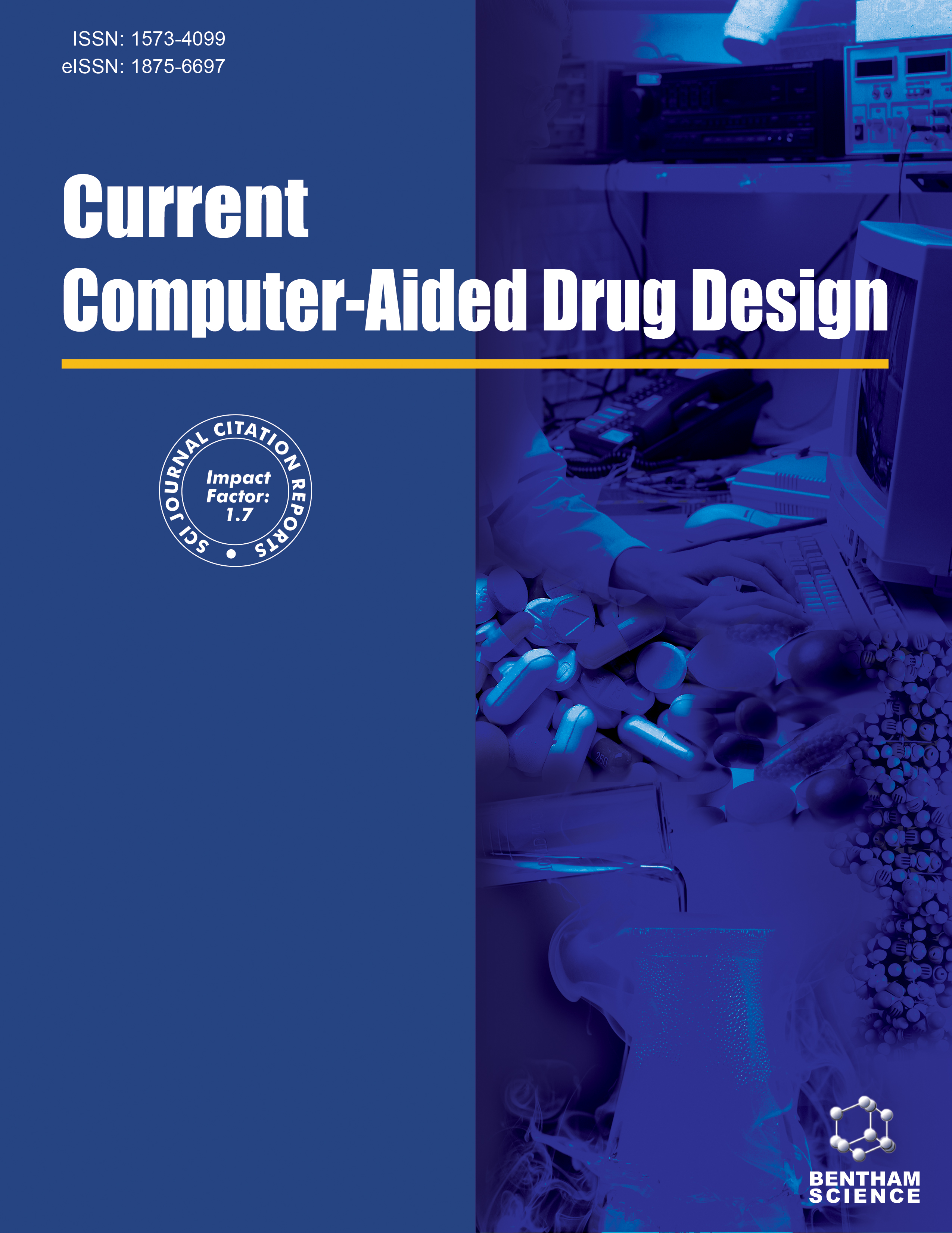- Home
- A-Z Publications
- Current Computer - Aided Drug Design
- Previous Issues
- Volume 1, Issue 3, 2005
Current Computer - Aided Drug Design - Volume 1, Issue 3, 2005
Volume 1, Issue 3, 2005
-
-
Role of Solvent Accessibility in Structure Based Drug Design
More LessAuthors: M. M. Gromiha and Shandar AhmadSolvent accessibility plays an important role to the structure and function of biological macromolecules. Generally amino acid residues located in the surface of a protein serve as active sites and/or interact with other molecules and ligands. In this review, we briefly define the concept of solvent accessibility with computational procedure. The methods available for calculating solvent accessibility of molecules from their th Read More
-
-
-
The Prediction of Carcinogenicity from Molecular Structure
More LessAuthors: Aliuska M. Helguera, Miguel C. A. Perez, Robert D. Combes and Maykel P. GonzalezIt is essential, in order to minimize expensive drug failures, to determine potential toxicity problems as early as possible. In view of the large libraries of compounds now being handled by combinatorial chemistry and high-throughput screening, identification of drug toxicity is advisable even before synthesis. Thus, the use of predictive toxicology is called for. A great number of in silico approaches to toxicity prediction ha Read More
-
-
-
Structure-Activity Relationships and Rational Design Strategies for Radical- Scavenging Antioxidants
More LessIn the past two decades, there has been growing interest in finding novel and non-toxic antioxidants to meet the requirements in chemical, food and pharmaceutical industries. To accelerate the antioxidant discovery process, various theoretical methods have been employed to investigate the structure-activity relationships of antioxidants. Accordingly, some rational-design strategies for antioxidants have been proposed and ap Read More
-
-
-
Scope and Limitation of Ligand Docking: Methods, Scoring Functions and Protein Targets
More LessAuthors: L. David, P. A. Nielsen, M. Hedstrom and B. NordenThe amount of resolved X-ray structures of protein-ligand complexes have exploded during the last decade. This has initiated much improvement of docking methods by an advanced knowledge about the key interactions in the complexes, nevertheless, it still remains a challenge even to reproduce known experimental results by ligand docking. A number of docking methods for predicting binding modes of small molecule Read More
-
-
-
Multi-Dimensional QSAR in Drug Discovery: Probing Ligand Alignment and Induced Fit - Application to GPCRs and Nuclear Receptors
More LessAuthors: Markus A. Lill, Max Dobler and Angelo VedaniQuantitative structure-activity relationships (QSAR) are often employed to establish a correlation between structural features of potential drug candidates and their binding affinity towards a macromolecular target. In 3D-QSAR, the structures of the involved molecules are represented by three-dimensional entities, allowing to quantify electrostatic forces, hydrogen bonds and hydrophobic interactions at the atomic level. M Read More
-
Volumes & issues
-
Volume 21 (2025)
-
Volume 20 (2024)
-
Volume 19 (2023)
-
Volume 18 (2022)
-
Volume 17 (2021)
-
Volume 16 (2020)
-
Volume 15 (2019)
-
Volume 14 (2018)
-
Volume 13 (2017)
-
Volume 12 (2016)
-
Volume 11 (2015)
-
Volume 10 (2014)
-
Volume 9 (2013)
-
Volume 8 (2012)
-
Volume 7 (2011)
-
Volume 6 (2010)
-
Volume 5 (2009)
-
Volume 4 (2008)
-
Volume 3 (2007)
-
Volume 2 (2006)
-
Volume 1 (2005)
Most Read This Month
Article
content/journals/cad
Journal
10
5
false
en


